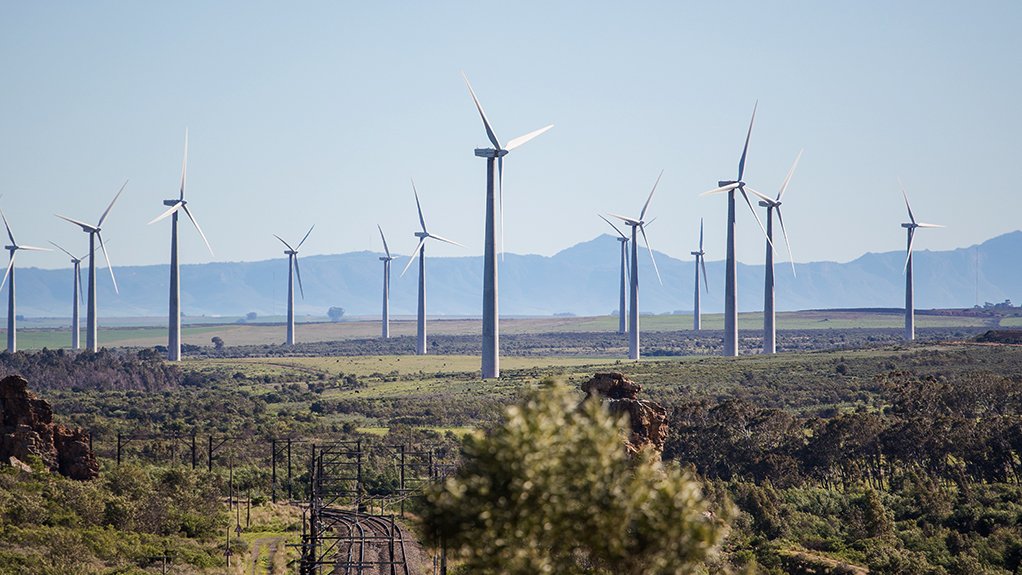While South Africa offers the rest of Africa practical examples of sustainable infrastructure development, there is still much that needs to be done before the country achieves a sustainable transition, says Stellenbosch University Centre for Sustainability Transition professor Desta Mebratu Belay.
The country is reaching for a more sustainable future, but two years after Cabinet approved 62 strategic infrastructure projects (SIPs), including in the energy, water and sanitation sectors, almost one-quarter of these projects, worth R340-billion, were delayed or on hold as of late May.
This is according to financial services provider Standard Bank Group, which highlighted in a May 25 report that monitors the progress of these SIPs that while eight have been completed and 40 are under way, 14 are behind schedule.
This follows the introduction of a Sustainable Infrastructure Development System methodology in 2020, which relates to the identification, consideration, evaluation, approval and implementation of workable infrastructure to ensure bankability.
Nonetheless, South Africa’s infrastructural foundation provides a good base from which to transition to a more sustainable economy.
“South Africa has always been open to new ways of planning development and its institutional infrastructure exceeds that of other African countries. It is one of the leading countries in the continent’s renewable energy transition,” says Belay.
He adds that the involvement of the private sector in the development of wind and solar farms through the Renewable Energy Independent Power Producer Procurement Programme is an encouraging example of what could transpire across Africa through public–private partnerships.
The Just Energy Transition Partnership, announced late last year at COP26 to support South Africa’s decarbonisation efforts while providing alternative, decent job opportunities to those working in the coal sector, is another encouraging initiative. But there is still much that can be done to achieve a full-scale transition towards a more sustainable, inclusive, climate resilient economy in South Africa, he reiterates.
Limiting Factors
The conventional approach to infrastructure planning and development followed by most African countries is limiting the continent’s potential to develop more sustainable and transformational infrastructure.
At the centre of this is the lack of a strategically integrated infrastructural development plan at the national level which restricts the long-term and sustainable return on investment realised from infrastructure development on the continent, adds Belay.
Continuing to practice a highly fragmented planning method at a sectoral level, owing to a lack of communication among Ministries, could lead to the development of more stranded assets that contribute limited value to national economies, he tells Engineering News.
Ministries tend to operate in silos, focusing on their objectives and not on how they can be better achieved through cross-sectoral consideration and coordination. The conflicting interests of every sector are evident during implementation, says Belay, citing inefficiencies at every decision-making level, from policymaking and planning to operation.
“The application of a piecemeal approach to policy intervention, ill-informed investment decisions and the failure to consider life cycles in infrastructure design are also to blame. All the aspects of sustainability must be considered – from the design stage onwards to realise the full benefit of infrastructure investments.
“Undertaking a strategic assessment that could inform the national infrastructural development strategy is needed at country level to determine coherent sustainable development goals in terms of energy, transportation, communication, industrialisation and urbanisation, which can filter into sectoral planning and operation respectively,” advises Belay.
Idling Investment
While the development of sustainable infrastructure is, ultimately, the responsibility of government, Belay says there are four key players involved in sustainable development financing – government, the private sector, development partners and civil society.
“These four funding sources need to be mobilised in a much more coordinated and systematic way while making smart investment decisions.”
President Cyril Ramaphosa announced the Infrastructure Fund in 2018. Housed in the Development Bank of Southern Africa, the fund is aimed at addressing the need for blended finance to allow for the efficient execution of socioeconomic infrastructure programmes and projects in the country.
In February, Engineering News reported that, since its establishment, the Infrastructure Fund had packaged projects with a capital value of R21-billion.
Belay notes that infrastructural development represents a significant percentage of the capital expenditure component of the yearly budget of many African countries. However, African governments are making many ill-advised public investment decisions regarding the disbursement of these funds.
Additionally, the private sector needs to be a major contributor to the continent’s development but is being discouraged from doing so by a lack of investor-friendly conditions and the absence of a stable political environment, civil unrest and terrorism, among other aspects.
“Investment in infrastructure will require a more secure environment, which is not the case in most African countries. There is some improvement, but we are not there yet. Significant work needs to be done to create conditions that will allow for the required level of investment to flow into Africa,” explains Belay.
Belay notes that for the first time in history, the continent’s underdevelopment presents an opportunity since about 70% of the development Africa needs to have full-fledged infrastructure is yet to be built.
“This provides Africa a unique leapfrogging opportunity to fill the existing infrastructural gap through more resource-efficient and climate-resilient technologies and fulfil the sustainable development goals.”
Africa’s transition to a more sustainable economy is not a choice, as it is imperative that the continent meets the socioeconomic needs of its growing population.
“We need to transition to more inclusive resource-efficient and climate-resilient infrastructure. If we continue with the business-as-usual scenario, Africa may change forever owing to the ecological disasters, as well as socioeconomic disruption, it may face in the coming decades,” concludes Belay.
Edited by: Zandile Mavuso
Creamer Media Senior Deputy Editor: Features
EMAIL THIS ARTICLE SAVE THIS ARTICLE
ARTICLE ENQUIRY
To subscribe email subscriptions@creamermedia.co.za or click here
To advertise email advertising@creamermedia.co.za or click here













